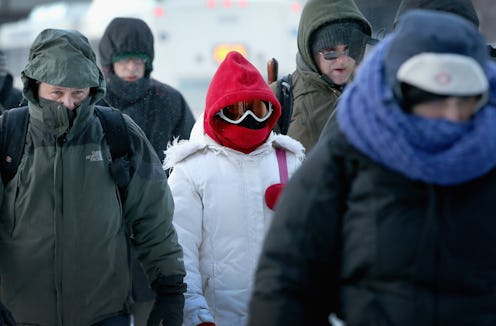News
How Climate Change Might Affect Depression
With major winter storms and a never-ending cold snap sweeping across parts of the country, many have fallen into a deep winter funk that they can't seem to shake. It's not altogether uncommon: around 20 percent of all Americans suffer from minor bouts of cold-weather induced depression, better known as seasonal affective disorder (SAD). But with changing weather patterns and a growing trend of stubborn frigid temperatures hitting parts of the world particularly hard, that number could begin to rise, spelling trouble for millions across the country whose seasonal depression could wreak havoc on their day-to-day activities and cause a significant shift in the way schools, businesses, and infrastructures are run.
As global temperatures continue to climb and heat-trapping emissions cause excessive amounts of moisture to accumulate in the atmosphere, precipitation increases, causing flooding and bizarre winter weather throughout the globe. The Union of Concerned Scientists, a nonprofit advocacy group based in Cambridge, Massachusetts, explained in a recent report that an intricate dance between "Arctic sea ice decline, ocean patterns, upper winds, and the shifting shape of the jet stream" could be to blame for the icy temperatures plaguing the U.S. Midwest and East Coast this season as well.
Because of the relatively low barometric pressure of arctic air, says the Union of Concerned Scientists, surrounding it essentially acts as an insulator, keeping it from dipping south — but with warming global climates, they explain, the barrier has been significantly weakened:
As the Arctic region warms faster than most other places ... the Arctic sea ice melts more rapidly and for longer periods each year, and is unable to replenish itself in the briefer, warmer winter season. This can destabilize the polar vortex and raises the barometric pressure within it. ... This instability allows the cold Artic [sic] air to break free and flow southward, where it collides with warmer, moisture-laden air. [The resulting] collision can produce severe winter weather in some regions and leave milder conditions in other parts of the northern hemisphere.
It's a nightmare for those already suffering from seasonal bouts of depression. As blizzards, record rainfall, and sub-zero temperatures force a larger number of Americans indoors for longer periods of time, the percentage of those with SAD will likely rise as well. At some point, each region will have to ask itself what to do about the treacherous conditions inside the home rather than simply addressing those outside.
Will employers be required to give employees more sick days or longer breaks in order to recuperate? Will schools close early during gloomy winter weather to prevent students being cooped up all day in a windowless classroom? And if health insurance carriers are required to offer more treatment options to their customers, will they raise monthly premiums and pass the buck to their customers?
Those types of concerns may not be so far-fetched anymore, if winter weather patterns continue to worsen. In a 2008 study of workplace mood disorders, Jong-Min Woo of South Korea's Inje University and the University of Maryland's Teodor T. Postolache indicated that depressive episodes can significantly impact an individual's work habits, affecting decision-making abilities and causing chronic absenteeism. If not addressed correctly and swiftly, the probability of job loss and disability rises.
"In humans, light has potent biological and therapeutic effects," the study explained. "[Light] deprivation ... can affect the internal biological clock, sleeping patterns, and energy levels [and] sensitive individuals may notice changes in their mood associated with the doses of sunlight exposure, such that they may feel gloomy during long stretches of cloudy winter days and experience mood improvement on sunny summer days."
There are currently a few different treatment options for those suffering from SAD, such as Omega-3 fatty acids, light boxes, and essential oils. But the real answer to the looming SAD dilemma may lie in figuring out preventative measures and accepting that, at its very heart, climate change might just be to blame.
Images: Getty Images (2)
